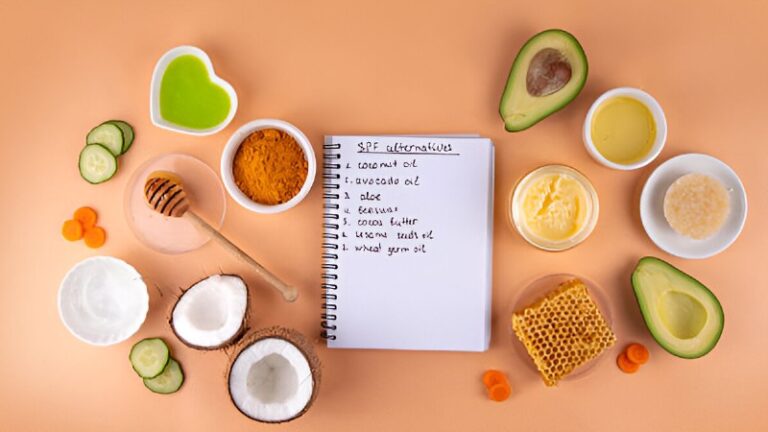In an era dominated by commercial skincare products laden with chemicals, more people are turning to DIY skincare as a natural, effective alternative. Homemade skincare routines empower you to understand what goes onto your skin, reduce exposure to harsh ingredients, and create personalized treatments that suit your unique skin type. Beyond affordability, these natural solutions can promote long-term skin health and a radiant glow.
Why Choose DIY Skincare?
DIY skincare isn’t just a trend—it’s a holistic approach to beauty that combines natural ingredients, sustainability, and personal wellness. Here are some key reasons why making your own skincare is worth considering:
- Control over ingredients: Avoid synthetic additives, preservatives, and fragrances.
- Customization: Tailor recipes to target specific skin concerns like dryness, dullness, or breakouts.
- Cost-effective: Many DIY treatments use ingredients commonly found in your kitchen.
- Eco-friendly: Reduce packaging waste by reusing jars and containers.
- Holistic benefits: Incorporating food-based ingredients provides nutrients that nourish skin from the outside.
Essential Ingredients for a Natural Glow
Understanding the benefits of natural ingredients is crucial for creating effective DIY skincare treatments. Here’s a breakdown of some powerhouse ingredients:
| Ingredient | Benefits | Recommended Uses |
|---|---|---|
| Coconut Oil | Moisturizing, antimicrobial, antioxidant-rich | Body butter, lip scrub, makeup remover |
| Shea Butter | Deeply hydrating, reduces inflammation, supports elasticity | Body creams, hand creams, night moisturizers |
| Honey | Humectant, antibacterial, brightening | Face masks, lip scrubs, cleansing balms |
| Oats | Gentle exfoliation, soothes irritation, balances pH | Face masks, body scrubs |
| Jojoba Oil | Balances sebum production, nourishes skin, reduces fine lines | Facial oils, eye creams, moisturizers |
| Aloe Vera | Anti-inflammatory, calming, hydrating | Face masks, toners, soothing gels |
| Turmeric | Anti-inflammatory, brightening, reduces pigmentation | Face masks, spot treatments |
DIY Skincare Recipes for a Radiant Glow
Below are some effective, easy-to-make skincare recipes that you can integrate into your daily or weekly routine:
1. Hydrating Aloe & Honey Face Mask
Ingredients: 2 tbsp aloe vera gel, 1 tbsp raw honey, 1 tsp coconut oil
Instructions:
- Mix aloe vera, honey, and coconut oil into a smooth paste.
- Apply evenly on a clean face and leave for 15–20 minutes.
- Rinse with lukewarm water and pat dry.
Benefits: Hydrates, calms irritation, and boosts natural radiance.
2. Oat & Yogurt Brightening Mask
Ingredients: 2 tbsp finely ground oats, 1 tbsp plain Greek yogurt, ½ tsp turmeric
Instructions:
- Mix all ingredients to form a smooth paste.
- Apply to face and neck for 10–15 minutes.
- Gently exfoliate with circular motions before rinsing.
Benefits: Gently exfoliates, balances pH, reduces dullness.
3. Coconut & Sugar Body Scrub
Ingredients: ½ cup brown sugar, ¼ cup coconut oil, 1 tsp vanilla extract
Instructions:
- Combine ingredients until smooth.
- Massage onto damp skin in circular motions.
- Rinse with warm water and follow with moisturizer.
Benefits: Exfoliates dead skin cells, enhances circulation, leaves skin soft and glowing.
4. Anti-Aging Facial Oil
Ingredients: 2 tbsp jojoba oil, ¼ tsp turmeric, 1 drop vitamin E oil
Instructions:
- Mix ingredients in a small dropper bottle.
- Apply 2–3 drops to cleansed face and neck at night.
Benefits: Reduces fine lines, evens skin tone, promotes elasticity.
5. Refreshing Green Tea Toner
Ingredients: ½ cup brewed green tea, 1 tsp witch hazel, a few drops of lavender essential oil
Instructions:
- Mix green tea and witch hazel in a small spray bottle.
- Add lavender essential oil for fragrance and calming effect.
- Spritz onto face after cleansing for a refreshing boost.
Benefits: Balances oily skin, tightens pores, provides antioxidant protection.
Tips for Maximizing Your DIY Skincare Routine
- Consistency is Key: Natural treatments often show results gradually. Stick to a regular routine.
- Patch Test: Always test new ingredients on a small area to prevent irritation.
- Store Properly: Use airtight containers and keep products in a cool, dark place to prolong shelf life.
- Customize Recipes: Adapt ingredients based on your skin type and seasonal needs.
- Complement with Diet: Eating nutrient-rich foods supports your skincare efforts from the inside out.
DIY Skincare Safety and Considerations
While DIY skincare is generally safe, consider these precautions:
- Allergic Reactions: Natural ingredients can still trigger allergies. Test before full application.
- Storage and Shelf Life: Avoid storing recipes with fresh ingredients (like fruits) for more than a week.
- Sun Sensitivity: Ingredients like citrus and turmeric may increase sun sensitivity. Apply sunscreen afterward.
- Hygiene: Use clean utensils and containers to prevent bacterial contamination.
Why Natural Skincare Works
Dermatologists increasingly recommend natural skincare for certain skin types. Key benefits include:
- Reduced Irritation: Free from harsh chemicals that can cause redness, itching, or breakouts.
- Rich Nutrient Delivery: Vitamins, antioxidants, and fatty acids penetrate the skin naturally.
- Eco-Friendly: Minimizes environmental impact compared to mass-produced products.
Statistics show that 67% of consumers prefer skincare products with natural ingredients, highlighting the shift toward holistic, safe alternatives.
Conclusion
DIY skincare is more than just a beauty trend—it’s a practical, sustainable, and effective way to nurture your skin. By leveraging natural ingredients like coconut oil, aloe vera, oats, and honey, you can create personalized treatments that brighten, hydrate, and protect your skin. With consistent care, attention to quality, and a little creativity, achieving a natural glow from home is entirely possible.
Whether you’re combating dryness, dullness, or early signs of aging, these DIY recipes and tips offer a fresh, hands-on approach to glowing, healthy skin—without the chemical overload found in many commercial products.
Pro Tip: Pair your DIY skincare routine with hydration, sleep, and a balanced diet for the ultimate skin transformation.
Frequently Asked Questions (FAQs)
Is DIY skincare safe for sensitive skin?
Yes, DIY skincare can be safe for sensitive skin, but always do a patch test first. Avoid ingredients that trigger irritation and use gentle, natural ingredients like aloe vera, honey, and oatmeal.
How often should I use homemade face masks?
Depending on the mask type and your skin needs, 1–3 times per week is sufficient. Hydrating masks can be used more frequently, while exfoliating masks should be used sparingly to avoid over-exfoliation.
Can DIY skincare replace commercial products?
DIY skincare can replace many commercial products, especially moisturizers, face masks, and scrubs. However, for specialized treatments like acne medication or sun protection, consult a dermatologist.
How long do homemade skincare products last?
Shelf life varies by ingredients. Products with fresh fruit or dairy should be used within 5–7 days, while oils, honey, and butters can last up to several months if stored in airtight containers in a cool, dark place.
What are the best natural ingredients for glowing skin?
Popular ingredients include honey, aloe vera, coconut oil, shea butter, oats, turmeric, and jojoba oil. These ingredients hydrate, nourish, and brighten the skin naturally.


